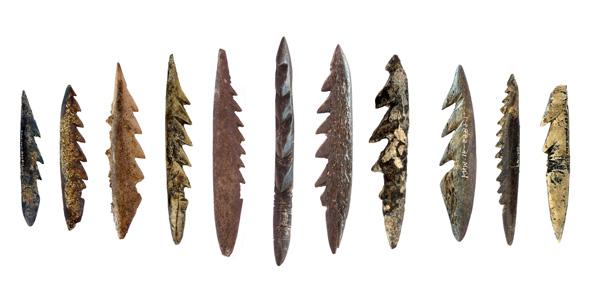 |
| 1/3. |
A project exploring the role of East Africa in the evolution of modern humans has amassed the largest and most diverse collection of prehistoric bone harpoons ever assembled from the area. The collection offers clues about the behaviour and technology of prehistoric hunter-gatherers.
East Africa is the epicentre of human evolution and its archaeological remains offer the potential to fill gaps in our understanding of early modern humans from their earliest origins, around 200,000 years ago, through to the most ‘recent’ prehistory of the last 10,000 years.
The In Africa project, directed by Dr Marta Mirazón Lahr, co-founder of the Leverhulme Centre for Human Evolutionary Studies at the University of Cambridge, is seeking to do exactly that. The group believes that, in East Africa, key ecological and cultural conditions converged, which allowed modern humans to evolve new behaviours and technologies to better exploit the natural resources that they found around them.
For the past five years, [...] University of Cambridge
Actualización: Arpones de hueso africanos y la evolución de los humanos modernos
Un ambicioso proyecto de investigación ha logrado reunir cientos de ellos en el entorno del Lago Turkana (Kenia)
Los
objetos que fabricaban nuestros antepasados, cómo los hacían y para qué
los empleaban, pueden darnos una idea aproximada de cómo eran
realmente. Por eso, un estudio en el entorno del Lago Turkana (Kenia) y
sus paleocostas, se ha centrado en la identificación y clasificación de
los arpones de hueso recogidos en la zona, que ascienden a varios
cientos, para tratar de reconstruir los comportamientos y costumbres de
los grupos de cazadores-recolectores del área hace entre 13.000 y 6.000
años. Los investigadores están convencidos de su uso para explotar los
recursos acuáticos que ofrecía el lago, e incluso se plantean que
pudieron ser utilizados para cazar hipopótamos...







No hay comentarios:
Publicar un comentario